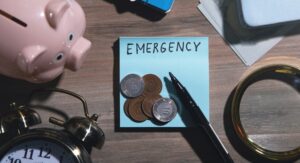Understanding APR: What You Need to Know
The annual percentage rate (APR) is the interest you’ll pay on borrowed money or the return you’ll earn on your investments over a year.
Learn more about APR!
APR is shown as a percentage that gives you a clear picture of how much it really costs to borrow money over the life of a loan or what you can earn from an investment each year.

Understanding the Annual Percentage Rate (APR)
The Annual Percentage Rate (APR) is a helpful way to understand how much you’ll actually pay in interest and fees for a loan over the year.
It applies to different kinds of loans, like credit cards, home mortgages, student loans, and personal loans.
Banks and credit card companies use the APR to figure out your total payments, which include any extra charges, such as fees from lenders and interest costs.
How it works
You can easily find your APR on your monthly credit card statement, which shows how much interest you paid that month. This amount is simply a percentage of what you still owe on your card.
It’s good to keep in mind that it isn’t the same for everyone. If you have a solid credit history (with a score of 740 or higher), you’re likely to get a lower rate compared to those with less favorable credit.
What Makes a Good APR?
When it comes to loans, the amount you borrow can influence your APR, with larger loans typically offering lower rates.
For credit cards, interest rates can be quite diverse, usually ranging from about 5% to over 30%.
Your credit score is a key factor in determining the rate you receive, so it’s worth keeping an eye on that.
Just remember, these rates generally apply to everyday purchases, whether you shop online or in-store, and rates for cash advances may differ.
Many credit cards also come with special introductory offers that feature a 0% APR for purchases and balance transfers for a limited time, often lasting anywhere from three to 40 months.
To take full advantage of this promotional rate, it’s important to follow the terms and make sure you pay on time and in full. If you miss a payment, you could lose that great rate sooner than you think.
Plus, it’s a good idea to aim to pay off your balance before the promotional period ends; otherwise, you might find yourself switched to a standard variable rate.
Having a strong credit score can really boost your chances of landing a great APR. To get a better sense of your eligibility for the best deals, consider checking your free Experian Credit Score.
How to Calculate Your APR
Figuring out your monthly APR is easier than you might think! All you need is your loan statement and a calculator. Here’s a simple guide to walk you through the process:
Gather Your Information
First, find your APR rate and your current loan balance. Knowing how much you owe and your APR percentage is essential to getting started.
Calculate Your Annual APR Amount
Next, you’ll want to determine how much you owe in APR for the year. Just multiply your loan balance by your APR percentage.
Let’s say you have a loan of $15,000 with an APR of 10%. To find out how much interest you’ll owe for the year, you would perform the following calculation: 0.10 x 15,000 = $1,500.
This means that over the course of the year, you will owe $1,500 in interest on your loan.
Find Your Monthly Payment
To figure out how much you’ll need to pay each month, simply divide your annual APR amount by 12.
Continuing with our example, $1,500 divided by 12 gives you about $125.00. So, you can expect to pay around $125.00 each month in APR.
By following these straightforward steps, you’ll have a clearer picture of your monthly APR and how it affects your overall loan payments.
It’s a great way to stay informed and manage your finances better!
Like our content? Keep reading and see how credit card limits work by clicking the button below.






